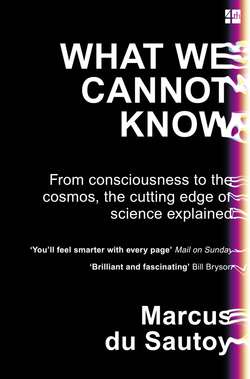Читать книгу What We Cannot Know: Explorations at the Edge of Knowledge - Marcus Sautoy du - Страница 49
POLLEN PING-PONG
ОглавлениеAlthough conventional microscopes don’t allow one to see individual atoms, they did allow scientists in the nineteenth century to see the effect that these atoms were having on their surroundings. It’s called Brownian motion after Robert Brown, who in 1827 noticed the random behaviour of small particles of pollen floating on the surface of water. Since pollen was organic, Brown’s first thought was that it might be exhibiting signs of life as it jumped around the surface. A similar random behaviour of coal dust floating on alcohol had also been observed by Dutch scientist Jan Ingenhousz in 1785. When Brown saw the pollen’s behaviour replicated by inorganic matter, he was rather stumped as to what was causing the jittery motion.
It’s striking that the idea that it might be invisible atoms bashing into the larger visible material had been suggested by the Roman poet Lucretius in his didactic poem On the Nature of Things:
Observe what happens when sunbeams are admitted into a building and shed light on its shadowy places. You will see a multitude of tiny particles mingling in a multitude of ways … their dancing is an actual indication of underlying movements of matter that are hidden from our sight … It originates with the atoms which move of themselves. Then those small compound bodies that are least removed from the impetus of the atoms are set in motion by the impact of their invisible blows and in turn cannon against slightly larger bodies. So the movement mounts up from the atoms and gradually emerges to the level of our senses, so that those bodies are in motion that we see in sunbeams, moved by blows that remain invisible.
This was written in 60 BC, but it would take Einstein’s mathematical analysis of the motion to confirm this atomic explanation of the random movement in Lucretius’ sunbeams and Brown’s pollen.
The goal is to provide some model that will produce the strange motion exhibited by the small pieces of pollen on the surface of the water. If you divide the surface into a grid, there seems to be an equal probability that the pollen will move left–right–up–down. It is similar to the motion of a drunken man who randomly makes steps according to the toss of a four-sided dice. The picture below shows the paths of various particles of pollen as plotted by the French physicist Jean Baptiste Perrin, who took up the challenge of explaining the pollen’s motion in his book Les Atomes.
The proposal emerged at the beginning of the twentieth century that scientists were observing the pollen being buffeted by the motion of much smaller molecules of water.
It was Einstein’s mathematical brilliance that allowed him to analyse this model in which a large object was subjected to the impact of much smaller objects that were moving randomly. He proved that the model predicted precisely the observed behaviour. Think of an ice rink with a large puck sitting in the middle of the rink and then introduce a whole system of tiny pucks that are set off in random directions at particular speeds. Every now and again the tiny pucks will hit the large puck, causing it to move in one direction. The skill was to assess how many small pucks you would need, and their relative size, in order to produce the observed behaviour of the larger puck.
Einstein’s success in producing such a mathematical model that replicated the motion of the pollen was a devastating blow to anyone who believed that a liquid like water was a continuous substance. It was very hard for anyone who still believed in Aristotle’s view of matter to come up with a comparably convincing explanation.
The calculations allowed one to estimate how small the molecules of water were in comparison with the pollen they were knocking around. Although it was convincing evidence that matter came in discrete pieces, it did not answer the question of whether you could still infinitely divide these pieces into ever smaller parts.
Indeed, the indivisible atoms turned out to be far from indivisible with the discovery of smaller constituents that made up atoms of carbon or oxygen. The next layer down revealed that an atom is made up of even tinier pucks called electrons, protons and neutrons, the first of which had already come to light some eight years before Einstein’s theoretical breakthrough.
